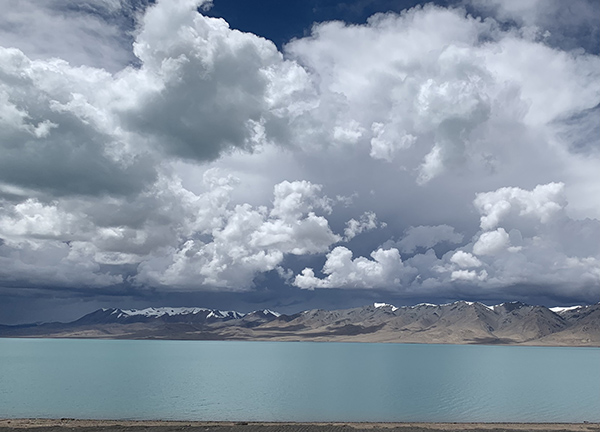Miocene Uplift of Tibetan Plateau Shapes Today's Seasonal March of East Asian Monsoon
Today's East Asian summer monsoon (EASM) features an extension from tropical to subtropical areas and supports the livelihoods of billions of people. A long-standing question is how old the present-day EASM is, with answers varying from about 40 million years ago to 20 million years ago. The seasonal march of the modern EASM, characterized by stepwise northward rainfall stages, is the most fundamental process of the EASM’s northward expansion. However, when and how the seasonal march of the monsoon emerged remain unknown.
The Tibetan Plateau began its uplift around 50 million years ago, following the collision between the Indian and Eurasian tectonic plates. (Image by HE Linqiang).
A recent study published in
Geophysical Research Letters revealed that today's East Asian monsoon is marked by the emergence of the monsoon seasonal march since the Miocene, driven by the uplift of the Tibetan Plateau (TP).
Led by Prof. ZHOU Tianjun from the Institute of Atmospheric Physics at the Chinese Academy of Sciences, this study integrated proxy data, climate modeling, and theoretical solutions to investigate the geological history of the monsoon seasonal march, East Asian climate, and their linkages. The analysis showed that the uplift of the TP’s main body since the Miocene, in conjunction with the subtropical westerly jets, has led to the northward migration of the subtropical high and monsoon rainbelt from early summer to late summer. The emergence of the monsoon seasonal march further extended the monsoon climate northward to its present boundary.
HE Linqiang, the first author of the study and a Ph.D. student at the Institute of Atmospheric Physics, explained, "We used a theoretical barotropic model to clarify the influence of uplifted topography on the East Asian climate at the geological scale. Specifically, the weakening of the subtropical westerly jet colliding with the uplifted topography induced an anomalous high pressure over East Asia from early summer to late summer, pushing the precipitation and winds northward."
This study sheds light on the essential role of the emergence of the monsoon march in the establishment of today's EASM in geological history, determined by the topographic forcing of the TP.

